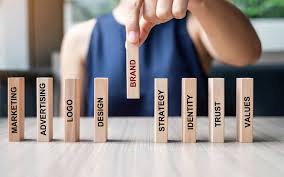Media exposure or notoriety obtained through strategies other than paid advertising is known as earned media. This article will throw more light on earned media value, the differences between earned, owned, and paid media
What is Earned media?
Any writing about you or your company that you haven’t paid for is considered EM, also known as earned content. Even though earned media opportunities are always published by a third party, there are ways for marketers to position themselves.
What Earned Media Isn’t?
The publicity you buy or own is not considered earned media. For instance, when a business pays a publication to produce a positive piece about them, that is not paying for earned media; rather, it is just purchased media. Furthermore, writing a blog post on your most recent product release for your company’s blog is not considered earned media; rather, it is considered owned media because you are the author of that blog post.
The differences between these camps are rather obvious, but every marketer must be aware of them.
Paid Owned and Earned Media
Paid media seems pretty simple, right? It refers to media (or advertising) that you purchase, such as PPC campaigns, social media ads, print ads, and partnerships.
Owned media is different from paid and earned media in that it consists of the platforms that your company owns. Examples include your social media pages, website, blog, etc.
Your brand is in charge of both owned and paid media, which is a problem. For instance, you choose how to target your paid advertisements and how much money to spend on them. You choose what information to provide on your website and produce blog posts to distribute on social media.
However, earned media doesn’t put your brand in command. How do you obtain EM, then? It’s simply earned, then. It’s what outsiders, like the media, influencers, and your customers, have to say about your brand—not because they’re being paid to, but rather because they’re so moved or intrigued by it that they want to.
Now, it’s easy to fall into the myth that if your brand provides a high-quality good or service and interacts often with customers and other brands online, EM will just materialize. It’s feasible but improbable. It takes work to earn that coverage, perhaps a lot more work than it does to maintain your paid and owned media.
The good news is that you can leverage a variety of marketing strategies to strengthen your brand.
Earned Media Value
The value of social media content is measured using the influencer marketing metric known as “earned media value.” EMV tracks user interaction with third-party-produced social media material about a brand. Although EMV also takes into account posts from media, stores, and other brands, this third party is generally an influencer.
All brands mentioned in a piece of content are given credit for the value of engagement (also known as EMV). Imagine, for instance, that a lifestyle influencer tags Coach, H&M, and Benefit Cosmetics when she posts her look on Instagram. Coach, H&M, and Benefit would all make $500k EMV from this activity if the post creates engagement worth $500k EMV.
A CreatorIQ firm called Tribe Dynamics uses its algorithm to assess the precise earned media value of digital material. EMV is now the de facto industry standard for gauging the effectiveness of social media marketing because of this work. Earned media value can be used in conjunction with other EMV measures. These include a share of voice, influencer community size, and EMV retention, to assess the effectiveness of influencer marketing initiatives and set benchmarks for brands in respective market segments.
Why does earned media value matter?
Let’s first discuss why earned media value is a crucial measure for social media marketing.
First, unlike KPIs for paid advertising, earned media metrics (EMM) include all content about a brand that wasn’t produced by that brand. Online word-of-mouth recommendations and influencer endorsements are two instances of earned media that can significantly increase sales conversions.
Due to its perceived customer dependability, EM is more valuable to brands than other types of social media marketing. Rather than relying on a paid advertisement, people are more likely to make purchases after consulting a friend or expert. Earned media is a crucial strategy for developing the reputation of your brand. This is because it often displays a content creator’s objective viewpoint.
Additionally, influencer marketing is becoming more and more crucial to the success of any brand as the creative economy expands. The best approach for businesses to boost the amount of EM generated about them—and, consequently, their earned media value—is through robust influencer programs.
Methods for Estimating Earned Media Value
Unfortunately, you can’t just enter your company name into a calculator to determine your earned media value, but it doesn’t mean social media marketing is a mystery. EMV is calculated using a secret formula developed by Tribe Dynamics, just like other EMV parameters. EMV numbers are mostly influenced by platforms, audience interaction, and artists. Let’s examine the roles that each of these factors plays in the formula for determining earned media value.
#1. Platforms
Earned media value takes into account the platform on which a post is published. This is because not all content platforms are created equally. A YouTube video about your business, for instance, earns a higher baseline EMV value than a Tweet because videos often take longer to create and watch. Influencer marketing software from Tribe Dynamics keeps track of EMV for material published on websites, blogs, YouTube, Facebook, Pinterest, TikTok, Instagram, and Twitter.
#2. Audience Participation
The majority of a post’s earned media value performance is based on audience engagement, or the number of individuals who liked commented on, or shared this post after it was published.
EMV gives a more accurate picture of the social relevance of content by emphasizing engagement rather than other social media marketing metrics like reach and impressions. Consumers who passively scroll over a post won’t give it much EMV; instead, a post will do well when its audience is motivated to engage with what the writer has to say.
#3. Creators
Earned Media Value incorporates material from four different categories of third-party creators: periodicals, companies, retailers, and influencers, and it serves as a comprehensive indicator of earned media performance. Since influencer marketing efforts are the main focus of EMV metrics, influencer postings typically account for the majority of the EMV data attributed to businesses. However, any information that is produced about a brand by a third-party retailer, media outlet, or business will also count toward the EMV of that brand.
In general, the larger a creator’s audience, the more likely they are to produce more earned media value for each post. Although the size of a creator’s following is not directly taken into account in EMV calculations, content from established, well-known producers tend to have higher EMV totals than content from micro- and nano-influencers since more followers lead to more possibilities for engagement.
The Value of Earned Media
Your viewers require an efficient filter to prevent information overload because they are always being sprayed with firehoses of information. You are more likely to pass your audience’s filters if you receive earned media. EM gives you third-party credibility because an individual who is not being compensated by your business but has enough faith in your goods, insights, etc. to discuss, quote, or support the content of your brand.
Additionally, EM helps your company connect with a larger audience, one that might not be familiar with you but might benefit from your information, goods, or services.
Simply put, earned media should be a significant part of your content marketing plan, even though it may need more work because you are not in charge of the process or the decision-making.
How successful is earned media?
Simply put, very. Families, friends, and the information they read and see online all have a big impact on today’s customers. People no longer only discuss businesses’ good, bad, and ugly qualities at the water cooler; instead, they also discuss them with anyone they’re connected to online, which may number in the hundreds of thousands or even millions.
And many of those folks pay attention and base their purchasing decisions on those stories. 57% of Americans in the U.S. said that when they learn about a new product, they are more likely to believe what their friends and relatives have to say about it. A third or so of American shoppers favor the data they can get from a Google search.
Earned media will develop alongside digital marketing and social media, and departments other than public relations, such as marketing and customer service, will be held more accountable for securing EM’s attention.
Let’s go into what “earned media” means today and the different ways you can use it in your marketing to make sure you’re up to speed on this “web 2.0” version of an antiquated term.
Examples of Earned Media
As opposed to owned media and paid media, “earned media” may be a term you are familiar with. The distinctions between paid media, owned media, and earned media are rather distinct, as we hinted at above: You “pay” for paid media, you “own” owned media, and you “earn” earned media. Here are some typical examples of EM from today to demonstrate how this works in practice.
#1. TV news item
You can still anticipate earned media in the form of a 90-second news ad on a local (or national) station if your company makes a significant enough splash in its sector. Some of the earliest forms of EM are still used today.
A company moving its headquarters to a new city, for instance, and advertising that move online might be able to land an interview with the area’s local news station about some of the new jobs it will be looking for.
#2. Article in a Trade Journal
Smaller business announcements may not catch the interest of huge media conglomerates, but they may very well do so in a trade publication that specializes in that area. This is EMas well.
For instance, an environmental company that develops a novel composting technique might go unnoticed by the nightly news, but a magazine devoted to sustainability is likely to want to write an article about this ground-breaking technique for its specialized readership.
#3. Product Overview
For readers looking for high-quality products, “roundup” articles, which rank the finest of a given sort of product, are constantly being written by content developers. Getting a product listed in someone’s roundup is a sort of earned media if you build it well enough.
A manufacturer of one-person tents would, for instance, find their product listed in an article titled “The 10 Best One-Person Tents for Campers on a Budget.”
#4. Organic Traffic
It’s challenging to define this example. Earned media typically takes the form of written or visual content. However, if you produce your content and “earn” traffic to it by appearing higher in search results, the traffic you get to it might be considered EM. But let’s be clear: SEO and organic traffic differ significantly in crucial ways.
#5. Journal Article
Newspapers continually report significant local developments that have an impact on people locally and nationally, both in print and online. As a result, just as in a TV report about new business development, local newspapers may easily write about this subject for online readers.
#6. Tweet
Twitter may be focused on global current topics, but there are innumerable small groups of individuals that share their opinions on matters pertinent to their sector. Therefore, a tweet is a very small example of earned media. However, it depends on who sent the tweet.
What are some advantages and disadvantages of EM?
EM has the benefit of having a high reputation. Earned media does, however, have a few drawbacks. It offers almost no control in comparison to owned media and might be used to spread unfavorable sentiments about the company. Additionally, it might be challenging for businesses to track and evaluate its effects.
What is the impact of earned media?
Bypassing the anonymity of internet sources to communicate with consumers on a personal, reliable level When readers perceive you as trustworthy, content marketing is more interesting. This is likely to leave them with a favorable impression of your business.
What are the four types of media?
In general, you can classify media into four types:
- Print Media (Magazines, Newspapers)
- Broadcast Media (TV, Radio)
- Out Of Home (OOH) Media
- Internet
How do you earn earned media?
EM may appear to be beyond your control because it is in the hands of third parties, but this is not the case. Marketers have the power to sway some (but not all) of the dialogue surrounding their brands. Three of the greatest approaches to accomplishing it are listed below:
- Produce material worthy of sharing.
- Spend a lot of time communicating on social media.
- Make your clients incredibly, very delighted.
Tools for Earned Media
You are now prepared to start developing your own earned media plan because you have an understanding of how it should function. Here are 3 earned media tools that help your brand reach its objectives and successfully disseminate your content.
#1. PR Newswire
Sometimes you need a little help spreading the word when you have good news to share. With PR Newswire’s assistance, you may quickly and easily disseminate news, announcements, and events to a wide range of sources. Simply sign up, and PR Newswire will handle the rest, activating your account and assisting you in spreading the word about your press release to a wider audience. You may spread your news to a wider audience and guarantee that the proper people see it by using PR Newswire.
#2. Buzzstream
Any marketer trying to increase their link profile and reach must use Buzzstream. Using this service, you may connect with influencers in your niche and provide content that they might find interesting. Additionally, because influencers can easily drag and drop content into their Buzzstream accounts, Buzzstream makes it simple to share content with them. You can use the tool to organize all of your outreach tasks, from making lists to keeping track of responses.
#3. Satisfied
Building a portfolio on Contently is a great way to show potential clients and companies how good you are at writing. Articles, essays, and even your blog can be added to a portfolio that you can make public or private. If you’d like, you can also opt to include writing samples from other sources. Anyone can send work to Contently as a writer, novelist, or journalist, no matter how much experience they have. Making a portfolio with Contently is a fantastic way to expose your work to a wider audience and can open up new doors for you.
Summary
You should prioritize earned media in your content marketing plan over owned and paid media. By doing this, you won’t have to rely solely on people discovering and mentioning your brand. You are consciously and purposefully making the necessary moves to bring about this outcome. You’ll start to see quantifiable results as your efforts start to pay off. This will increase your site traffic, search rankings, leads, sales, and brand equity.
Related Articles
- PUBLIC RELATIONS CAMPAIGN: The 2023 Most Successful Examples
- HOW TO GET PR PACKAGES From Brands: Top Tips
- PR IN BUSINESS: Types, Functions, and Benefits
- PUBLIC RELATIONS MANAGER: Definition, Duties, Salary & Requirements






